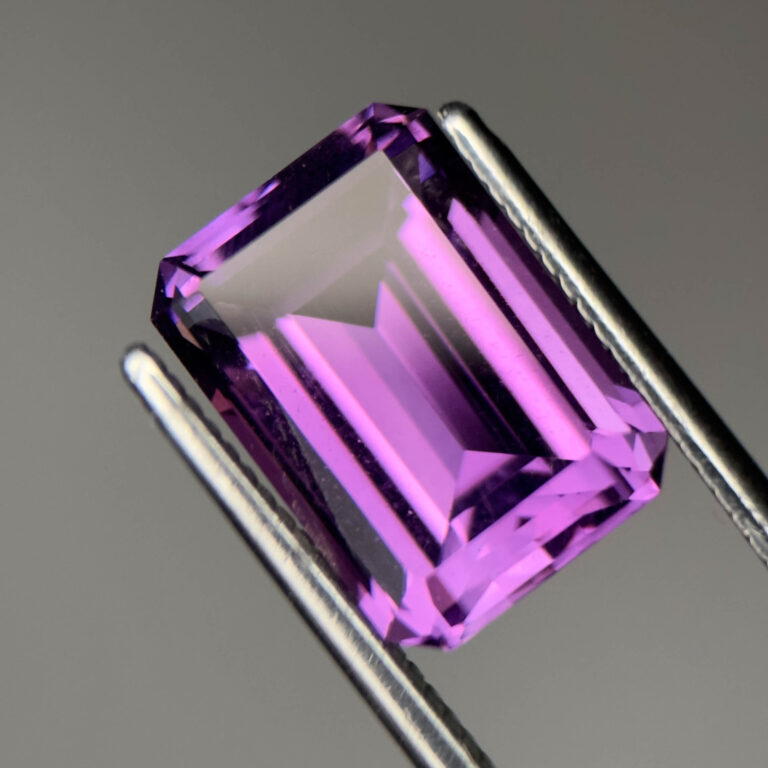Pear-Cut Gemstones: History, Features, and How to Choose
The pear cut, or teardrop shape, blends the brilliance of a round with the elegance of a marquise. I’ve always seen it as a “statement shape” — one that looks confident on the hand and rarely goes unnoticed. When cut well, it can appear larger than its carat weight and flatter the finger’s length. Yet, it has quirks: a fragile tip, shape asymmetry, and the possibility of a bow-tie shadow. In this guide, I’ll walk through its history, proportions, advantages, drawbacks, and my own notes on when this cut truly shines.
A Brief History
The pear cut dates back to 1475, credited to Flemish cutter Lodewyk van Bercken, who also invented the scaif — a polishing wheel that revolutionized faceting. His original pear had 58 facets, the standard still used today. Historical debate exists — a pear-cut diamond set in a goblet predates his supposed invention — but by the late 15th century, the pendeloque shape had become a European court favorite.
In the 20th century, it found renewed fame through pieces like Elizabeth Taylor’s 69.4-carat pear-shaped diamond. Today, it is enjoying another revival, appearing in celebrity engagement rings and high jewellery, standing out as both vintage and unconventional.
Shape and Anatomy
A pear has a rounded head, gently curving shoulders, and a pointed tip. It’s the only major cut with end-to-end asymmetry. Variations range from short and wide to long and slender, described by the length-to-width ratio (L/W):
- 1.5:1 – balanced, classic look.
- Below 1.3 – appears stubby.
- Above 1.8 – very slender, more like a marquise.
My advice: compare multiple pears side by side. Proportions alone don’t decide beauty — symmetry, shoulder curves, and the point’s alignment matter just as much. A misaligned tip or uneven sides can spoil the elegance.
Optical Traits
Brilliance: Most pear cuts have 58 facets in a brilliant style, giving them sparkle close to a round.
Bow-tie effect: Like ovals and marquises, pears can show a bow-tie-shaped shadow across the center. A faint, broken-up bow-tie is acceptable; a large, dark, static one signals poor light return.
Color: Pears reveal body color more than rounds. In diamonds, you may need a higher color grade than you would choose in a round to maintain a “white” appearance, as any warmth shows most at the tip.
Why Choose a Pear Cut
- Distinctiveness: Less common than rounds or ovals, a pear immediately draws attention.
- Face-up size: The elongated outline covers more finger area for the same carat weight, giving more visual impact.
- Finger-flattering: Worn with the tip pointing outward, it subtly elongates the hand.
- Versatile design use: Works in solitaires, halos, drop earrings, and as side stones. In halos, the outline is enhanced and the tip protected — a personal favorite combination.
- Symbolism: The “teardrop” can be read as joy, romance, or a story in itself — something clients often connect with.
Drawbacks to Consider
- Fragile tip: Needs a V-shaped prong or bezel for protection, especially in softer gems.
- Symmetry sensitivity: Small outline flaws are very noticeable; finding a well-proportioned stone takes more effort.
- Bow-tie risk: Poor cuts can have dull centers.
- Setting gaps: Many solitaires leave a small space between the engagement ring and a straight wedding band; contoured bands or halos solve this.
- Availability: Fewer high-quality pears exist compared to rounds, so expect to review more stones before finding the right one.
Best Gemstones for Pear Cuts
- Diamonds: Classic choice for engagement rings; usually priced 10–30% lower per carat than rounds (Rapaport, 2023), though top stones may cost more.
- Sapphires & Rubies: Natural crystal shapes lend themselves to elongated cuts; fine examples from Sri Lankan cutters often show even color and minimal windowing.
- Emeralds: Brilliant-cut pears can enhance sparkle if clarity is high; require careful setting.
- Spinels, Garnets, Tourmalines: Show color vividly in this shape; proportion and symmetry remain key.
- Moissanite & Lab-grown gems: Popular for affordable, high-brilliance pears in both white and fancy colors.
Price and Value
Round brilliants dominate demand and waste more rough, making them the most expensive per carat. Pears typically offer more size for less money, though the best-cut stones can close the price gap. In colored gems, shape impacts price less than color and clarity, but pears are often more available — and affordable — than fine rounds.
Buying Checklist
- Symmetry: Check alignment of the tip and evenness of curves.
- Ratio: Decide your preferred L/W and compare stones in that range.
- Bow-tie: View in different lighting; avoid static dark zones.
- Color: For diamonds, aim slightly higher in color grade; check tip area for tint.
- Clarity: Ensure the tip and table are free from inclusions that affect durability or appearance.
- Setting: Always protect the point with a V-prong or bezel; halos offer both style and security.
- Band fit: Plan for a contoured or halo design if you want a flush wedding band.
- Gem hardness: Choose durable stones for daily-wear pears; bezel softer gems.
Final Thoughts
I’ve found pears to be both rewarding and demanding. They can be spectacular when cut and set well — elegant, slightly unconventional, and rich with personality. But they require a discerning eye, especially for proportion and symmetry. If you’re drawn to their teardrop charm, take time to compare, view in motion, and imagine the piece you’ll create around it. Done right, a pear-cut gem isn’t just a shape; it’s a signature.
